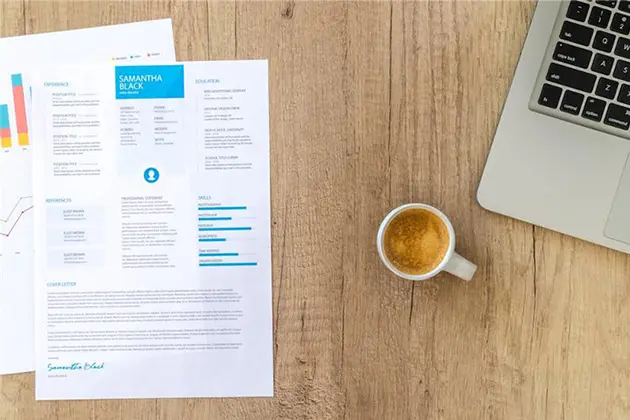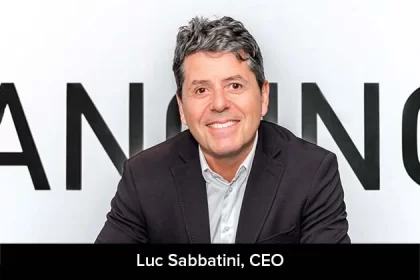Crucial in the digital age’s competitive job market, creating a standout resume in 2024+ goes beyond simple layouts. It involves aligning your professional persona with modern design tactics that appeal to today’s tech-driven industries.
Below, we look at practical strategies like using unique templates and digital tools. How do you balance creativity with professionalism?
Let’s find out together, and see how these hacks can improve your career path.
1. Integrating Personal Branding into Resumes
Your resume is that tool selling you to prospective employers. It should showcase your unique qualities, convincing recruiters why you’re the best choice.
Emphasizing personal branding on your resume can create a memorable impression. Crafting a narrative around your strengths and professional values not only sets you apart but aligns with organizational goals.
By integrating elements like personalized logos or consistent color schemes across platforms, you reflect professionalism while reinforcing brand identity in each application you send out.
2. Choosing the Right Templates for Industry-Specific Appeal
In today’s competitive job market, first impressions count. The right template makes a huge difference by saving time and ensuring readability and consistency. Customizability allows you to adapt layouts that align with industry preferences.
For example, creative fields might embrace bold colors and unconventional designs, while more traditional industries may favor clean lines and structured formats.
Free resources like Picsart offer customizable CV templates and examples tailored to various fields. These help streamline the process without sacrificing style or professionalism – essential elements in making your application stand out at first glance.
3. Enhancing Professional Persona through Design Elements
Even with a standard resume template, customizable formats allow you to infuse design elements that make your document distinctive. Personal touches emphasize professionalism while maintaining individual flair.
Consider:
- Color accents that highlight key sections
- Distinctive fonts for names or headings
- Minimalist icons denoting skills and contact information
- Visual separators like lines or borders for organization
Utilizing these enhancements effectively captures attention and subtly communicates your personality to potential employers. Thoughtful design can reflect your style without overshadowing the content, ensuring a cohesive professional image.
4. Data Visualization Techniques to Highlight Achievements
Numbers alone often fail to capture the full scope of your accomplishments. By employing data visualization, resumes can convey achievements with clarity and impact. Visual tools not only make information digestible but also memorable.
Try techniques like:
- Infographics for project timelines
- Charts illustrating growth or improvements
- Graphs comparing metrics or results
- Heat maps showcasing areas of expertise
These methods distill complex data into an engaging format that stands out in a crowded field of applications, reinforcing your value proposition while demonstrating analytical skills.
5. Digital Tools and Interactive Resume Features
Capturing a recruiter’s attention is one thing. Keeping them engaged to read your entire CV… is another challenge altogether! Integrating digital tools like Adobe Spark or Canva enhances the visual appeal of your resume, ensuring it stands out.
Interactive features, such as embedding QR codes leading to portfolios or links showcasing projects on platforms like Behance, provide depth beyond traditional formats.
These innovations transform static resumes into dynamic showcases that effectively convey skills and achievements while holding the reader’s interest throughout.
6. Striking a Balance between Creativity and Professionalism
Of course, you want your resume to captivate and impress potential employers. However, overly ‘flowery’ designs may send unintended messages about professionalism. Striking the right balance is crucial.
Creative elements should highlight qualifications without overshadowing core content or compromising clarity. Ensuring visual harmony with appropriate typography, white space for readability, and subtle design accents maintains both appeal and integrity.
This equilibrium not only presents you as innovative but also assures recruiters of your sound judgment in professional settings.
7. Leveraging QR Codes and Portfolio Links in Resumes
Earlier on, we mentioned them. But how exactly do you utilize QR codes and portfolio links in your resume design? It’s simple. Tools like Adobe Acrobat or Canva make this integration seamless by generating scannable codes that link directly to your online work.
These features provide employers instant access to detailed projects, offering a richer understanding of your capabilities beyond text descriptions alone.
This method effectively extends the narrative of achievements and skills while demonstrating tech-savvy credentials essential for many modern roles.
8. Customizing Designs to Match Industry Trends
Last but by no means least, customizing resume designs to align with industry trends can enhance your appeal. Keeping updated with sector-specific aesthetics shows awareness and adaptability.
For instance, tech fields may favor sleek minimalism, while creative industries might welcome bold visual statements. Some employers use AI in recruitment to increase efficiency and eliminate bias. Tailoring your resume’s look to reflect these preferences demonstrates an understanding of current professional landscapes.
Harnessing innovative resume design tactics elevates your professional presentation, making you stand out. With these modern strategies, navigating the competitive job market becomes not only feasible but truly rewarding.










